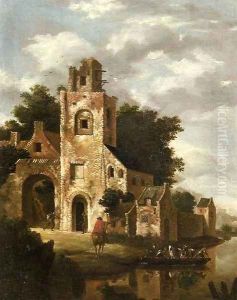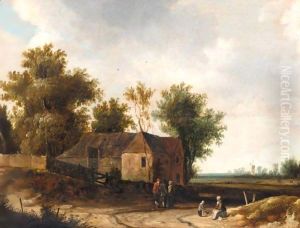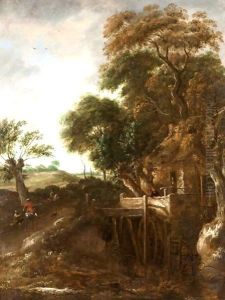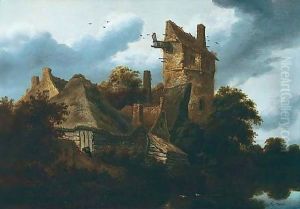Roelof Jansz. Van Vries Paintings
Roelof Jansz. van Vries, born in 1631 and died in 1681, was a notable Dutch landscape painter during the Golden Age of Dutch painting, a period in the 17th century when Dutch art, especially painting, was highly acclaimed for its great attention to detail, realism, and innovation. Van Vries was part of this illustrious epoch, contributing to the rich tapestry of Dutch cultural heritage through his exquisite landscape works.
His paintings typically featured expansive views of the Dutch countryside, often highlighting the serene beauty of its waterways, the lushness of its fields, and the intricacy of its skies. Van Vries had a knack for capturing the subtle interplay of light and shadow, a skill that lent his landscapes a realistic yet somewhat idyllic quality. His works are characterized by a meticulous attention to detail, with each element of the landscape rendered with precision and care.
Though not as widely recognized as some of his contemporaries like Rembrandt or Vermeer, Van Vries's contributions to the Dutch landscape genre were significant. He was among a group of artists who pioneered the depiction of the Dutch landscape as a worthy subject in its own right, moving away from the traditional focus on biblical, historical, or mythological themes that dominated European art at the time. This shift reflected a broader cultural movement in the Dutch Republic towards valuing the beauty and importance of the local environment and everyday life.
Van Vries's work, while primarily celebrated for its beauty and technical proficiency, also serves as a historical document, providing insight into the Dutch landscape of the 17th century. His paintings offer a window into the past, showing how the Dutch people interacted with their environment and how they saw themselves within it. Despite the scarcity of personal details about his life, Roelof Jansz. van Vries's legacy endures through his contributions to the development of landscape painting. His works continue to be studied and admired for their beauty, technical skill, and their role in the broader narrative of Dutch Golden Age art.



